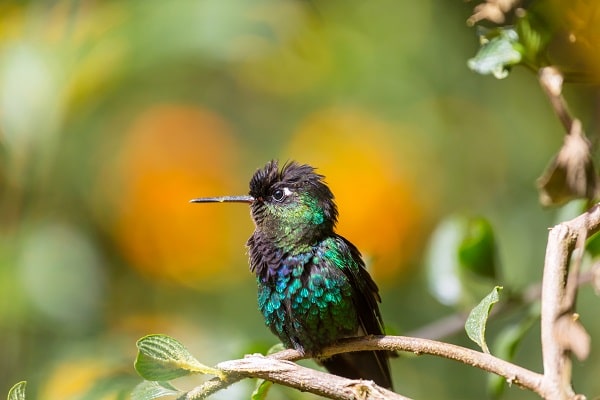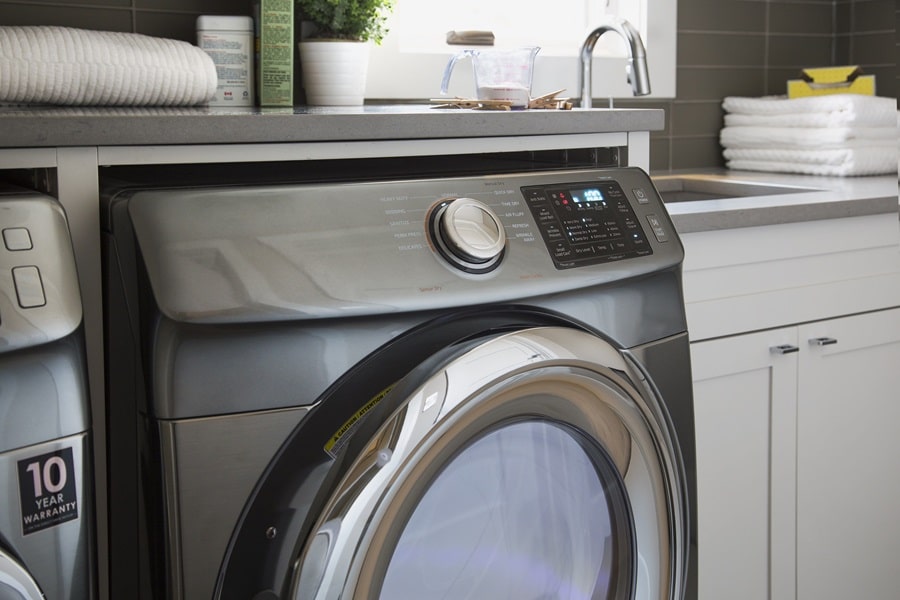Hummingbirds are native to the Americas and are the smallest of birds with the smallest species being the bee hummingbird, only 2.0 inches in length, and weighs less than 0.07 oz. They are known as hummingbirds because of the humming sound created by their flapping wings. They hover in mid-air at rapid wing-flapping rates, which vary from around 12 per second in the largest species to over 80 in some of the smallest birds. Some can fly in excess of 49 mph.
Many male hummingbirds have bright colors on the head, breast, back, and wings. When the sun hits these feathers they reflect many degrees of intensity. By shifting position, feathers can instantly become bright red or vivid green. In courtship, some males orient their bodies and feathers toward the sun to enhance the display value of their plumage to attract the female.

Most North American hummingbirds migrate southward in fall to Central America, Mexico, or the Caribbean. A few are year-round residents of California, Florida, the southwestern desert area of the US. The rufous species breeds farther north than any other hummingbird, breeding in North America and wintering in Florida or the Gulf of Mexico. Some migrate as far north as the Yukon in Canada or southern Alaska, they can tolerate occasional temperatures below freezing.

Hummingbirds eat many insects like mosquitoes, fruit flies, gnats, and spiders. The lower beak of hummingbirds is flexible and can bend up to 25 degrees, making a larger surface for catching insects. Hummingbirds do not spend all day flying, the majority of their activity consists of sitting or perching. Hummingbirds each day eat many small meals and consume around half their weight in nectar or double their weight if the nectar is 25% sugar. Hummingbirds spend an average of 10 to 15% of their time feeding and 75 to 80% sitting.
Hummingbirds visit flowers for food, extracting nectar, which is 55% sucrose, 24% glucose, and 21% fructose. Hummingbirds also take sugar water from bird feeders providing the birds with a reliable source of energy, especially when flower blossoms are less abundant. White granulated sugar is the best sweetener to use in hummingbird feeders. A ratio of 1-part sugar to 4 parts water, or 25% concentration, is a common recipe.
Organic or “raw” sugar contains iron and can be harmful. Brown sugar, agave syrup, molasses, and artificial sweeteners also should not be used. Honey is made by bees, but it is not good to use in feeders because when it is diluted with water, organisms easily grow in it, causing it to spoil rapidly. Red food dye is unnecessary, and there is no point in adding it to the nectar.
Hummingbirds have exceptional visual acuity giving them very good discrimination of food sources. It is commonly believed that hummingbirds are attracted to color while seeking food, such as red flowers or artificial feeders, but experiments indicate that Hummingbirds depend little on visual cues of flower color, but rather they use surrounding landmarks to find the nectar.
 We hope you liked these tidbits about hummingbirds. You might consider putting up a few feeders at your home so you can have fun watching all the varieties that come by for a drink. We have found that when looking for a feeder make sure you get something that is easy to clean. Some have too small of an opening so it’s hard to clean the bottle. Below are a few of our top picks.
We hope you liked these tidbits about hummingbirds. You might consider putting up a few feeders at your home so you can have fun watching all the varieties that come by for a drink. We have found that when looking for a feeder make sure you get something that is easy to clean. Some have too small of an opening so it’s hard to clean the bottle. Below are a few of our top picks.



